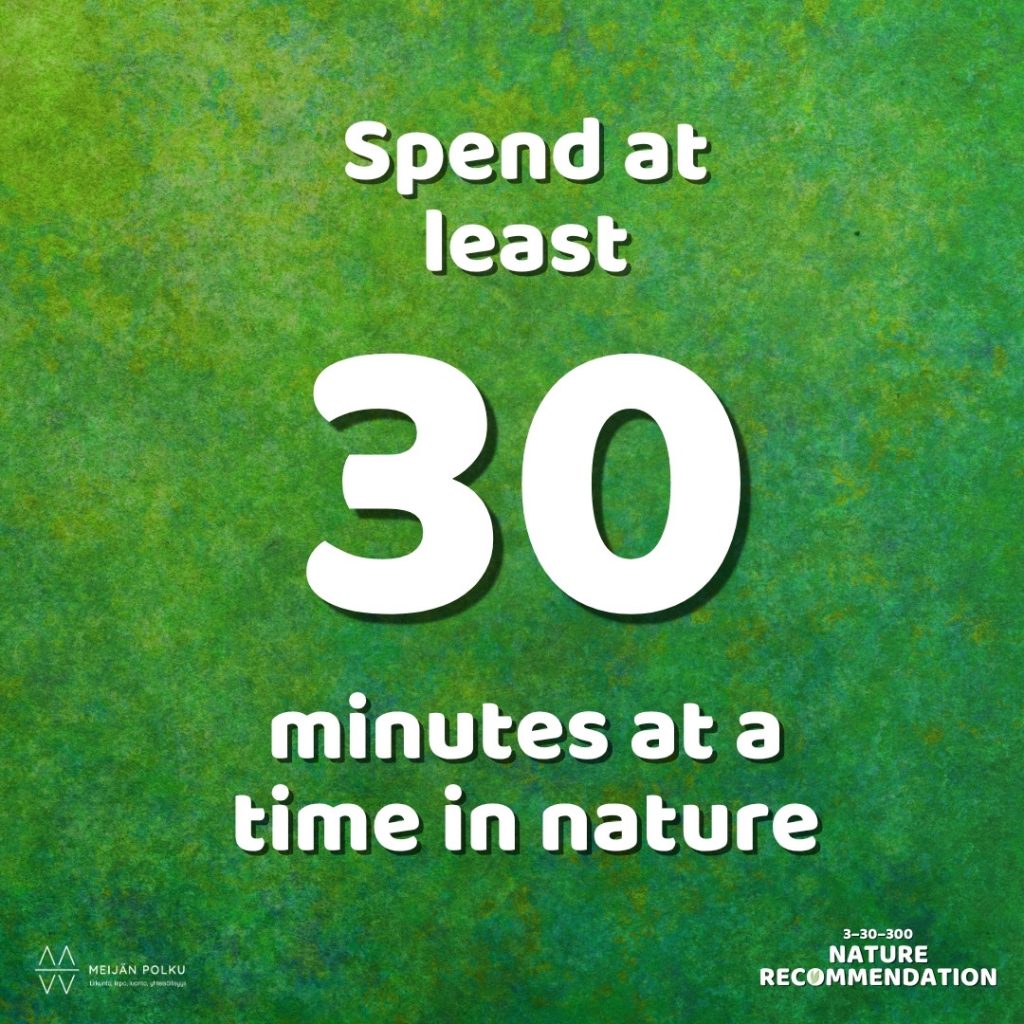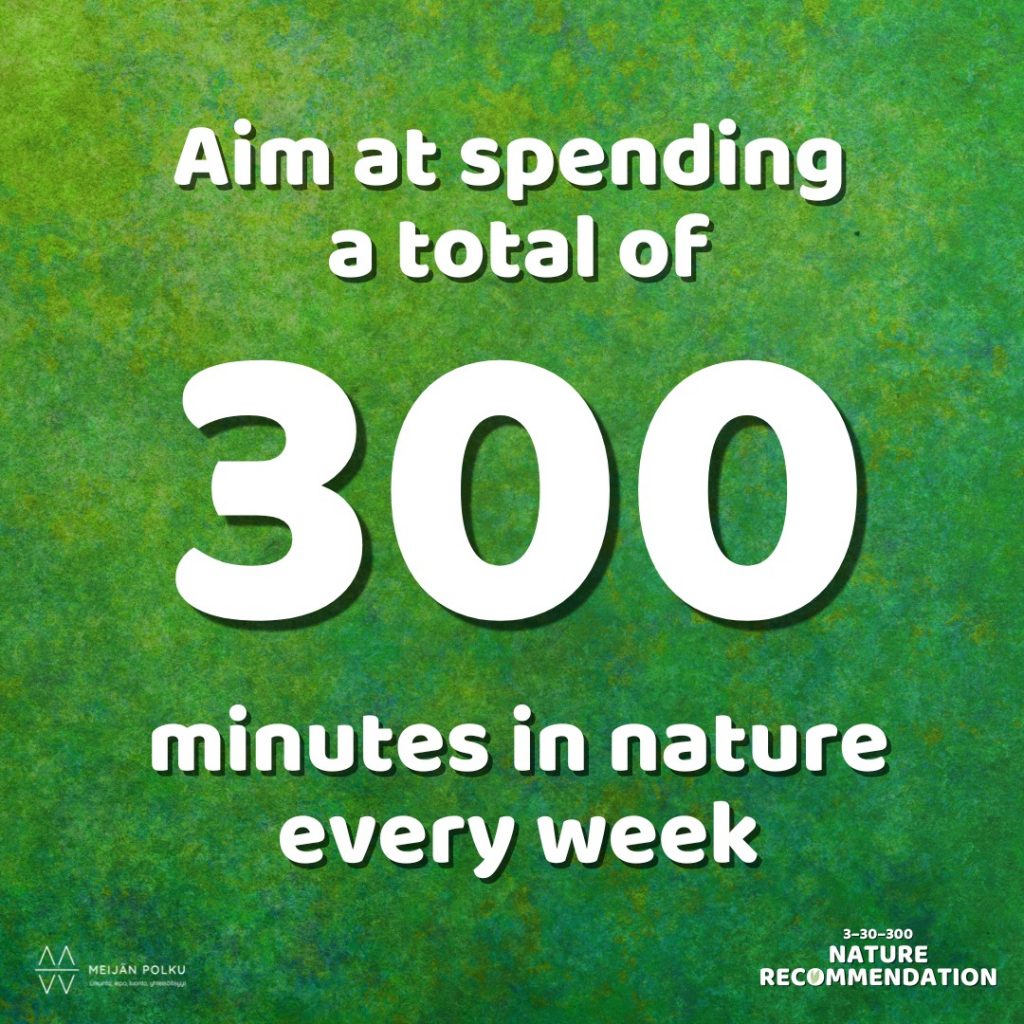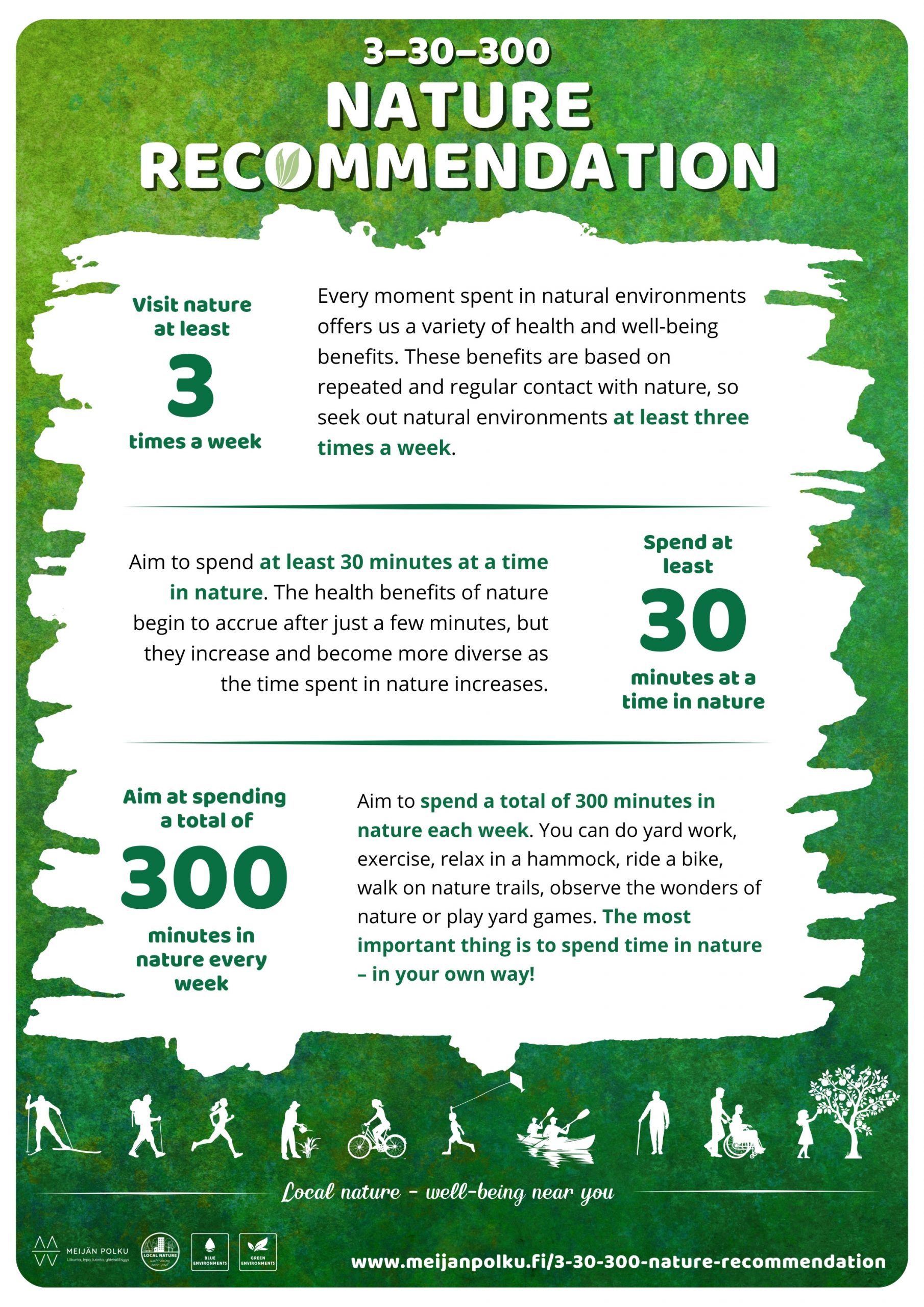3-30-300 Nature Recommendation

We all need natural environments to feel and be healthy. We need green and blue environments to enable the well-being of our minds and to enable active movement, as well as to maintain the diversity of our body’s health-promoting microbiome.
The nature recommendation is inspired by the 3–30–300 rule by Cecil Konijnendijk. This model has been widely used in urban planning in recent years. As a nature recommendation, the 3-30-300 model offers an easy-to-remember recipe for moving and spending time in nature:
Increasing time spent in nature offers ways to promote well-being and health both at the individual level, regionally and nationally. In the 3-30-300 Nature Recommendation, we raise natural environments and time spent in nature as one of the pillars of good health, alongside the more traditional healthy diet, sufficient exercise and adequate sleep. Actually, we go even further, because nature’s biodiversity enables all human well-being; it improves the quality of sleep, inspires us to move more, provides healthy environments that increase well-being and enables the basic conditions of our lives, such as access to oxygen, food and drinking water.
3–30–300 Nature Recommendation poster
You can download the A3-sized poster (PDF) to your computer and print it, for example, in waiting rooms to remind you of the importance of spending time in nature and being active in promoting well-being and health.
The poster also makes it easier to discuss the topic with different customer groups.
You can download the poster here.
Why 3–30–300 Nature Recommendation?
Every moment spent in natural environments offers us various well-being and health benefits. The aim of the 3–30–300 Nature Recommendation is to inspire us to spend time and move in natural environments as often as possible, but at least three times a week. This enables the well-being benefits we get from natural environments, which are based on frequent and regular contact with nature (Tyrväinen, 2023).
Going out to nature several times a week also enables new positive habits to form and become part of everyday life, as well as enables the accumulation of the amount of active movement recommended in the Physical activity guidelines.
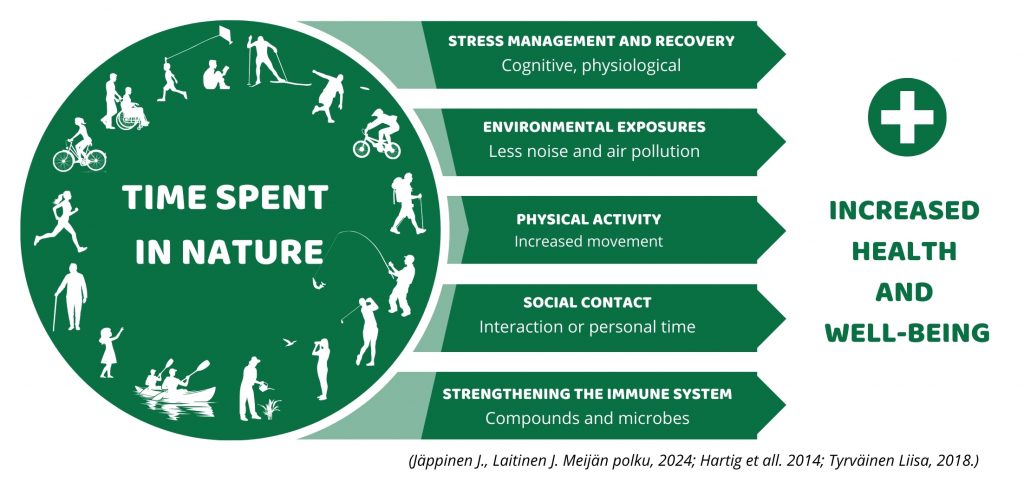

Nature Recommendation in Finland
We Finns are known as a ‘people of nature’. However, our relationship with nature is very dispersed and different, for example, depending on where we live and age group. About four percent of us don’t go out in nature at all, and 700,000 Finns go outside less often than once a week (LVVI3). At the European level, things are even worse in terms of physical activity. Almost half of Europeans do not do any kind of exercise (Special Eurobarometer 525).







Due to urbanization, the use of cars and our changed lifestyles, our contact with diverse nature has decreased significantly. We suffer from Nature-deficit disorder, the effects of which can be seen, for example, in the prevalence of lifestyle diseases, such as heart and circulatory system diseases, type 2 diabetes and some cancers. Increasing the amount of time spent in nature has an ever-increasing importance not only in terms of public health, but also in terms of the national economy. (Tyrväinen et al., 2024)
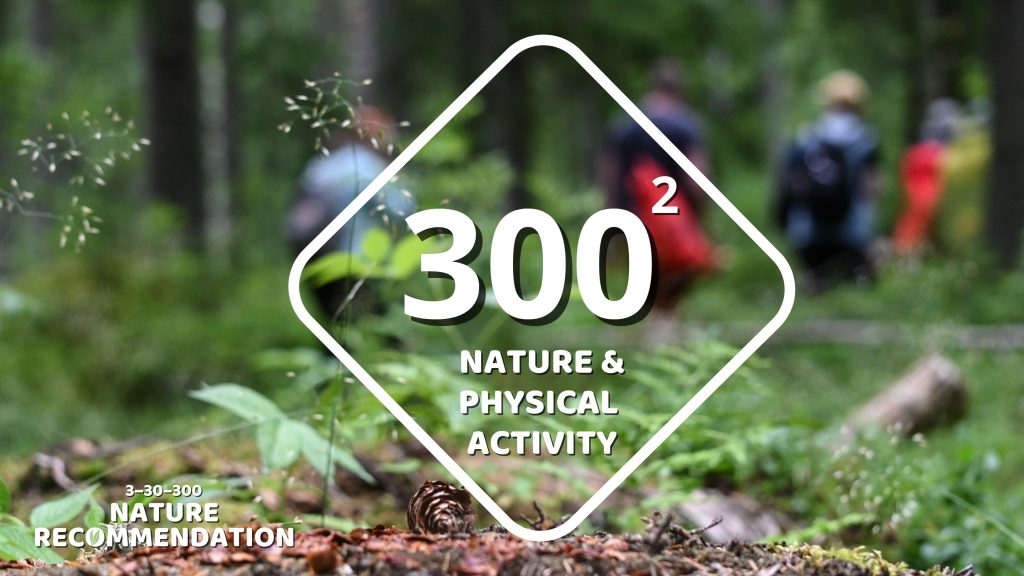
The costs of immobility and sedentary lifestyles in Finland have been estimated at approximately 3.2–7.5 billion euros per year, and the amount is expected to increase as the population ages and morbidity increases. (Vasankari et al. 2018) The number of people suffering from mental health problems is also growing in Finland, and the costs of work absences and disability pensions alone are estimated to be over 2 billion euros per year. (Kestilä et al. 2025) If we were to multiply the above figures by the population of Europe, for example, we would already be talking about several hundred billion euros per year.
More and more research shows that spending time in nature and being physically active both boost our well-being and health. These benefits start quickly and become even greater the more time we spend outdoors and moving. But how much is ‘more’?
As stated in the 3–30–300 Nature Recommendation, 300 minutes a week would be the optimal goal for the time spent in nature. As the Physical Activity Guideline for adults recommends at least 150 minutes of moderate aerobic activity a week, it also states that for even more health benefits, one should aim for 300 minutes a week.
If we want a better future, one of the best things we can do is spend 300 minutes each week being active in nature. Picture a society with fewer preventable diseases, significantly lower healthcare costs, and people living longer, happier lives—all from adding some outdoor activities in their lives. In addition, when we spend more time outdoors, we improve our connection to nature. This connection is crucially important not only for our well-being but also for the well-being of the planet.
300 times 3
To help people be physically active in nature for 300 minutes a week, we need to address a few key issues in our communities. First, we should make it easier for people to be active by improving the safety and appeal of walking, cycling, and public transport, and reducing our reliance on cars. Second, we need to add larger green spaces close to homes. And here is where the original 3–30–300 rule by Cecil Konijnendijk comes in: everyone should live within 300 meters of a large public green space. Third, we need to make outdoor activities and active transportation the next ‘big thing’.
If we can meet these goals across the population, we will have a society where physical and mental health are constantly improving. And at the same time, we are creating habitats where we can all thrive.
More about 3–30–300 Nature Recommendation in Europarc blog: National parks as promoters of stays and exercise in nature and in Outdoor Office Day blog: 3-30-300 Nature Recommendation
The original Finnish version of the 3-30-300 Nature Recommendation can be found here.

